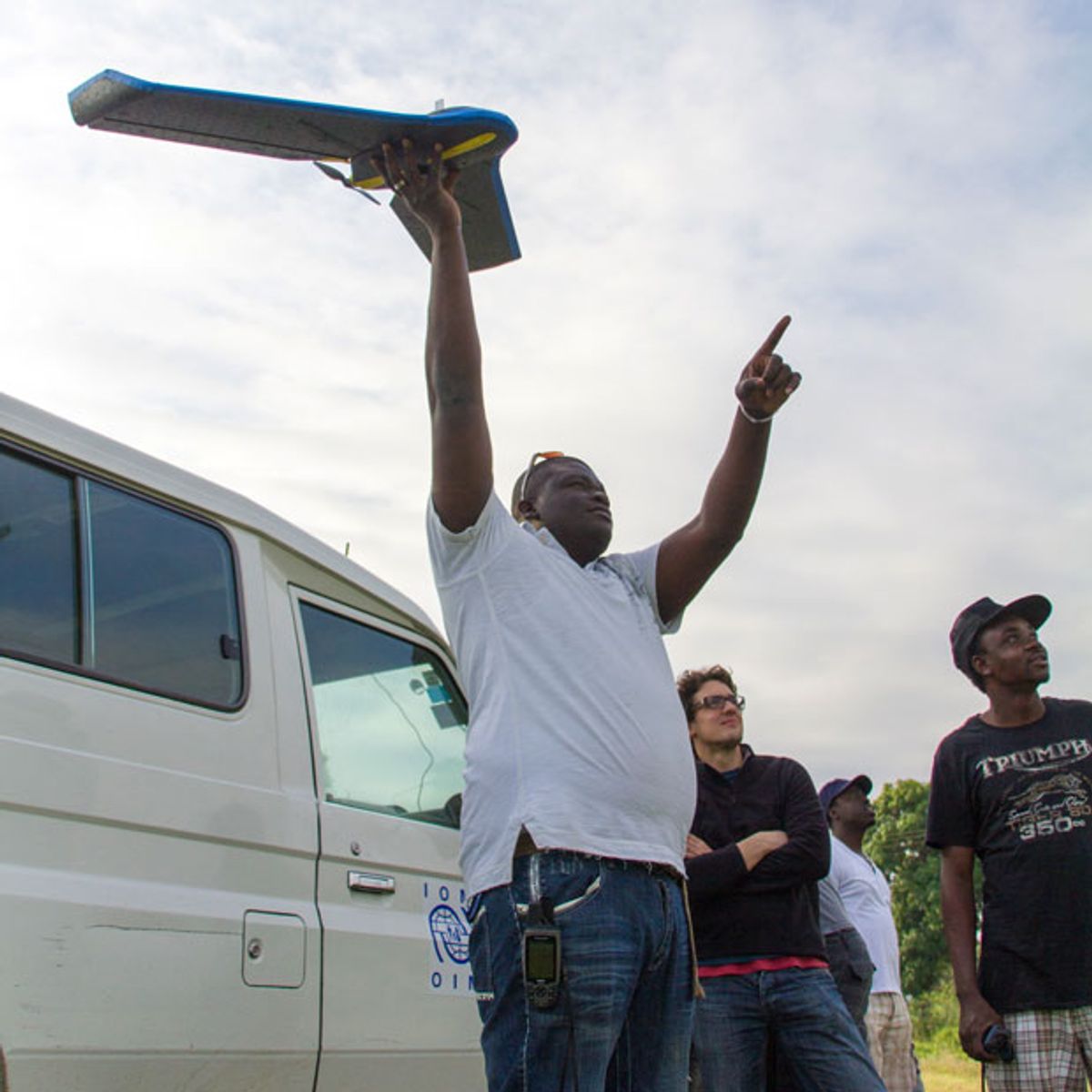Throughout most of the world, robots aren't particularly helpful to humanity, at least, not yet. If you've got enough money, you can of course buy a robot to vacuum your floors or clean your pool, but that's more about making life easier, which isn't quite the same thing as helping people in need. What with the increasingly negative focus on UAVs that we've been seeing lately (in terms of both civilian privacy issues and the military), it's important to remember that the overall purpose of robots is to help us, and drones can be very effective at doing just that, if they're given the opportunity. Drone Adventures was founded earlier this year to find ways of "promoting the great potential of drones in civilian applications, focusing on conservation, humanitarian, cultural and search and rescue domains," and they've recently returned from their very first mission: a humanitarian mapping project in Haiti.
Haiti has had a bad couple years. A huge earthquake in 2010 was followed by an epidemic of cholera, and in 2012, Hurricane Sandy killed 44 people, left 200,000 homeless, and did an estimated $750 million worth of damage. Roads and buildings were destroyed all over the place, and refugee camps are in a constant state of flux. In order to effectively deliver food, water, medicine, and just about anything else, aid agencies on the ground in Haiti desperately need to know where to go and how to get there. This means maps, of people and buildings and roads, but of course there are no maps that are kept up to date frequently enough to be of much use. And this is where the drones come in.
Back in April, Drone Adventures packed up three of SenseFly's eBee drones (these babies) along with a bunch of computers, and spent 10 days in Haiti using the UAVs to create incredibly high-resolution 3D maps of over 45 square kilometers of territory. Here's how it all went down:
Part of what makes it possible for Drone Adventures to accomplish so much in such a short amount of time is the combination of the eBee drones and the software that powers them. The drones are fully autonomous; you tell them what area you want them to image using Google Maps, turn them on, chuck them into the air, and then kick back as they fly around snapping pictures for you, guided by GPS. When they've covered the entire area, the drones head back to you for an autonomous pinpoint (hopefully) landing. Although the eBees have a lot of sophisticated electronics inside, they're mostly made of foam, so they can handle a lot of abuse.
Once the UAVs have landed, you can just offload the pictures from the on-board camera along with the IMU data. Clever software from a company called Pix4D does all the hard work of stitching images together and georeferencing and orthorectifying everything, to the point where it can all just be dropped straight into a system like OpenStreetMap for aid agencies and local people alike to use almost immediately. We're talking driving out to an area, planning a flight, launching drones, taking images, crunching numbers, and having a map ready at 5-10 centimeters per pixel of resolution in a matter of hours, which would be virtually impossible to do without the aid of robots.
Haiti was just the first Drone Adventures, um, adventure. We're excited to see where they're headed next, and our hope is that they're able to attract some interest and support from elsewhere in the robotics industry to help bring robots to people that need them in a helpful and positive way. And, you know, if the Drone Adventures team has an amazing experience along the way ('cause it looks like they totally do), there's nothing wrong with that, either.
[ Drone Adventures ]
Thanks Adam!
Evan Ackerman is a senior editor at IEEE Spectrum. Since 2007, he has written over 6,000 articles on robotics and technology. He has a degree in Martian geology and is excellent at playing bagpipes.






